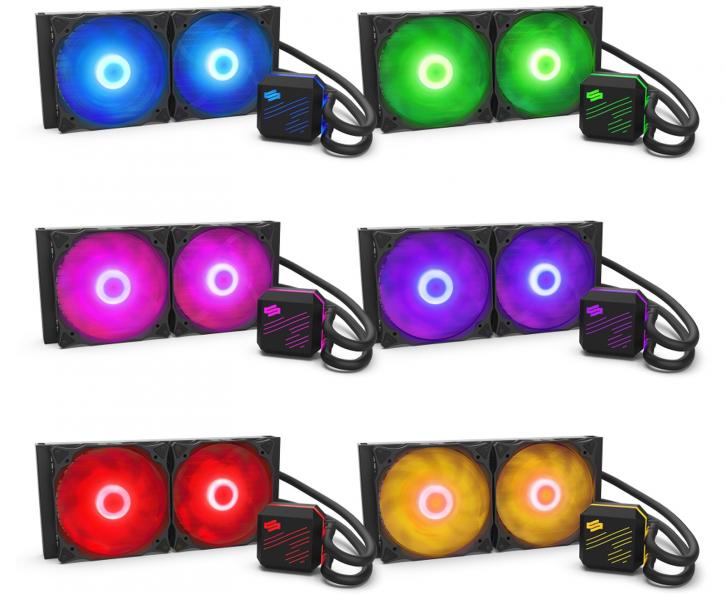Introduction
SilentiumPC Navis RGB 240 and 280 liquid cooler review
Today, we are reviewing two new AIO coolers from SilentiumPC: the Navis RGB 240 and 280 mm variants. These are the latest products from this Polish company known mainly for their chassis, power supplies and air coolers. The brand released two other AIO coolers over a year ago (November 2017) – the Navis Pro 120 and 240, but they lacked RGB lighting, even though it was already popular on the market by then. One strong advantage (and a selling point) of those coolers was definitely the 5-year warranty. Ok, so what do we have on offer? Well, there are 3 variants 280 mm, 240 mm and 20 mm.
We’ve received the first two models for this review. This actually makes sense, because not many end-users choose 120 mm versions of AIO coolers anyway, right? The Navis RGB series supports all major motherboard RGB systems, such as Asus Aura, as well as manual control via the included Nano RGB controller, or the advanced Aurora Sync controller provided with SilentiumPC Armis TG RGB cases. You can check out the default effect (colour changes included) on the product pages.
We have received the 280 and 240 mm versions of the Navis RGB (there is also a 120 mm available). From the technical point of view, the products look very similar to the other models available on the market. The radiators are of standard size, namely 27.5 cm in length for the 240 mm model, and 31 cm for the 280 mm model, with 2.8 cm in thickness and 12.14 cm in width for both. The radiator has aluminium fins instead of copper ones, which would have allowed for faster heat transfer (but it also costs significantly more).
The MSRP ranges from 52 € for the 120 mm version, to 75 € for the 280 mm one, but you’ll find more detailed info on the next page. Unfortunately, unlike its RGB-less predecessor, this model does not come with 5-year warranty coverage, so you’ll have to make do with a measly 2 years of protection instead. So, what is the difference here compared with the many other AIOs available on the market besides the lower price? Let’s check that on the following pages.



